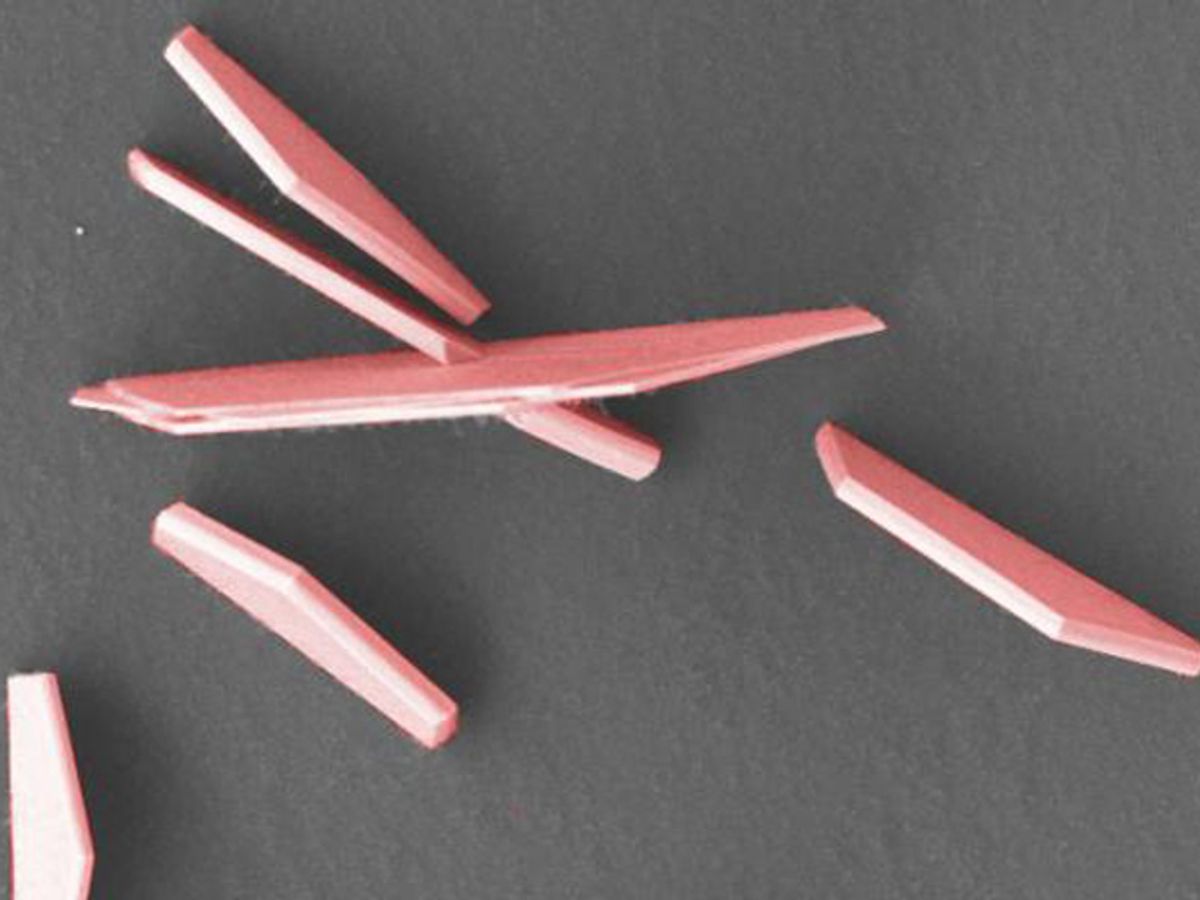Silicon telluride is a somewhat forgotten silicon-based semiconductor material. After it was identified back in the 1960s, a paper that outlined its general properties was published over 40 years ago. Not a lot of research has focused on the material since then, despite that fact that you can purchase just about any amount you wish. It is based on silicon after all.
Researchers at Brown University have pulled silicon telluride out of obscurity and have placed it solidly into the growing universe of two-dimensional (2-D) materials. The result may be that it yields advances including improved electrodes in batteries and better LEDs.
“My guess as to why there is very little literature on 2-D silicon telluride is that it was simply forgotten among the class of 2-D materials,” said Kristie Koski, assistant professor of chemistry at Brown, who led the work, in an e-mail interview with IEEE Spectrum.
Koski saw potential in silicon telluride because it’s a 2-D chalcogenide semiconductor that combines the best of all worlds: silicon, graphene-like layers, and is a chalcogenide like molybdenum disulfide, which has become the latest darling of the 2-D universe.
“What makes silicon telluride very attractive as a 2-D material is that it can be exfoliated or reduced to a monolayer material just like graphene,” Koski explains. “It is completely transparent but brilliant red,” she noted. “Also, it is a native p-type semiconductor. In the world of 2-D materials, very few are natively p-type, with phosphorene (2-D phosphorus) being one of the few examples that comes to mind.”
Koski also pointed out that silicon telluride has a photoluminescence peak in the red, which is potentially attractive for use in LEDs or as a photodetector.
Koski added: “Silicon right now (especially silicon nanowires) is a key material for lithium ion batteries. We found that silicon telluride also uptakes lithium and magnesium and could potentially be used for energy storage.”
In the research, which was described in the journal Nanoletters, Koski and her colleagues at Brown developed several new methods to grow silicon telluride and found methods to control its growth so that the product took the form of either nanoribbons, flat nanoplates, or standing nanoplates.
Koski and her colleagues were able to create these different structures by varying the temperatures of the furnace used in the chemical vapor deposition process. Each of the different shapes has different crystalline structures, which translates into each having different properties and potential applications.
With these new production methods for silicon telluride, the Brown researchers have demonstrated that they can fine-tune the intrinsically attractive properties of 2-D materials, leading to unique device geometries or optoelectronic uses for the material.
In future research, Koski and her colleagues will be continuing to explore silicon telluride’s electronic and optical properties.
Dexter Johnson is a contributing editor at IEEE Spectrum, with a focus on nanotechnology.



